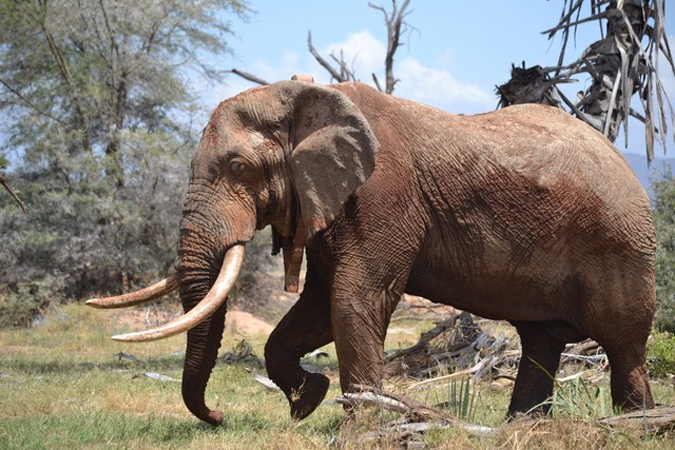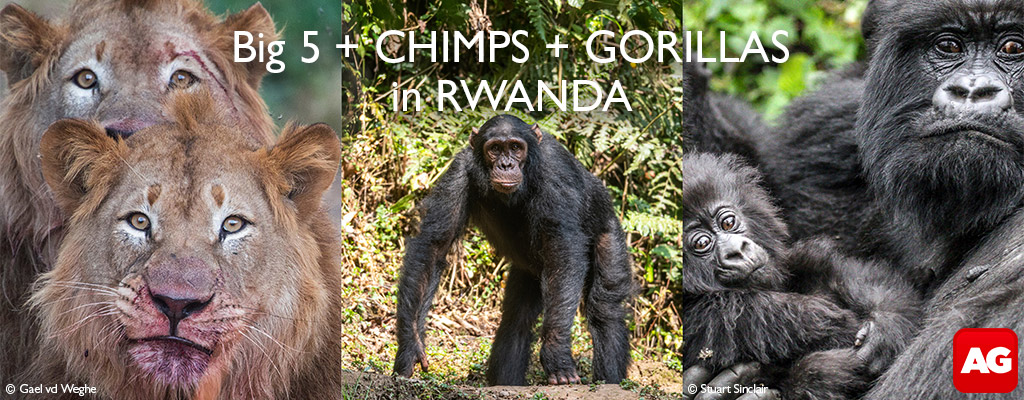
Males of many species slow down in their pursuit of females as they age – but not when it comes to elephants. A new study has found that elderly bull elephants invest more energy into tracking down and mating with females than their younger counterparts.
The study, published recently in the Journal of Animal Ecology, compared the movements of male African savannah elephants while they were in musth – a periodic state of intensive testosterone-fueled sexual activity – and when they were not. The results reveal that, as they age, bull elephants move more in musth and move less out of musth. The combination of these two diverging factors meant that, despite having similar speeds and range sizes between states at age 20, by age 50 males were travelling twice as fast in 3.5 times larger area in musth compared to non-musth.
Researchers from the University of Oxford, Save the Elephants and Colorado State University, made use of visual observations and GPS tracking data from 25 bull elephants aged between 20-52 years old for their study. The data was collected in the Samburu and Buffalo Springs National Reserve, northern Kenya, as part of Save the Elephants’ long-term monitoring project between 2000 and 2018.
African bull elephants continue to increase in body mass throughout their lives, which means that older bull elephants often reach twice the size of both females and young males.
“Older bulls are not only larger and more energetic in mating than younger bulls, but female elephants tend to prefer them, perhaps because their size demonstrates their survival skills over many years and seasons,” said Iain Douglas-Hamilton, founder of Save the Elephants.


Given that older bull elephants tend to be both the target of trophy hunting and poaching, man-made interference could disrupt the age structure, which could bring on musth prematurely and lead to changes in the reproductive dynamics of elephants.
Dr Lucy Taylor, a postdoctoral researcher at the University of Oxford who led the study, says “Investigating how elephant reproductive tactics vary with age is crucial to our understanding of the behavioural ecology of the African savannah elephant and, ultimately, the driving forces shaping the evolution of their life history. The fact that mature male elephants make such dramatic changes in their movement patterns when they are in musth also means that we can now use GPS tracking data alone to detect musth”.
The ability to detect musth remotely can be used to study male reproductive behaviour under challenging conditions across Africa and to identify and protect essential corridors for genetic transmission between different elephant populations in human-dominated landscapes.
Key findings from the study include:
• Unlike other species, African bull elephants increase the energy they put into reproduction as they get older.
• Male elephants move faster and further in musth as they age.
• 50-year-old males moved 50% more swiftly and twice as far when in musth compared to those of 35-years-old. Compared to 20-year-olds, who have yet to come into full musth, the 50-year-olds move twice as fast and over three times as far.
• Simultaneously, the elephants move less when in non-musth as they get older.
• The change of behaviour as older elephants go into musth is so clear that it can be detected remotely just by using their movement patterns, rather than having to observe the elephants directly.
Full report: Lucy A. Taylor, Fritz Vollrath, Ben Lambert, Daniel Lunn, Iain Douglas‐Hamilton, George Wittemyer (2019). Movement reveals reproductive tactics in male elephants. Journal of Animal Ecology. https://doi.org/10.1111/1365-2656.13035
To comment on this story: Login (or sign up) to our app here - it's a troll-free safe place 🙂.![]()








